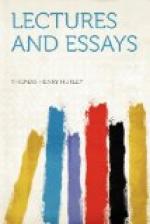Three days after Eginhard’s arrival began the series of wonderful events which he narrates, and for which we have his personal guarantee. The first thing that he notices is the dream of a servant of Ratleig, the notary, who, being set to watch the holy relics in the church after vespers, went to sleep and, during his slumbers, had a vision of two pigeons, one white and one gray and white, which came and sat upon the bier over the relics; while, at the same time, a voice ordered the man to tell his master that the holy martyrs had chosen another resting-place and desired to be transported thither without delay.
Unfortunately, the saints seem to have forgotten to mention where they wished to go; and, with the most anxious desire to gratify their smallest wishes, Eginhard was naturally greatly perplexed what to do. While in this state of mind, he was one day contemplating his “great and wonderful treasure, more precious than all the gold in the world,” when it struck him that the chest in which the relics were contained was quite unworthy of its contents; and, after vespers, he gave orders to one of the sacristans to the measure of the chest in order a more fitting shrine might be constructed. The man, having lighted a candle and raised the pall which covered the relics, in order to carry out his master’s orders, was astonished and terrified to observe that the chest was covered with a blood-like exudation (loculum mirum in modum humore sanguineo undique distillantem), and at once sent a message to Eginhard.
Then I and those priests who accompanied me beheld this stupendous miracle, worthy of all admiration. For just as when it is going to rain, pillars and slabs and marble images exude moisture, and, as it were, sweat, so the chest which contained the most sacred relics was found moist with the blood exuding on all sides. (Cap. ii. 16.)
Three days’ fast was ordained in order that the meaning of the portent might be ascertained. All that happened, however, was that, at the end of that time, the “blood,” which had been exuding in drops all the while, dried up. Eginhard is careful to say that the liquid “had a saline taste, something like that of tears, and was thin as water, though of the colour of true blood,” and he clearly thinks this satisfactory evidence that it was blood.




